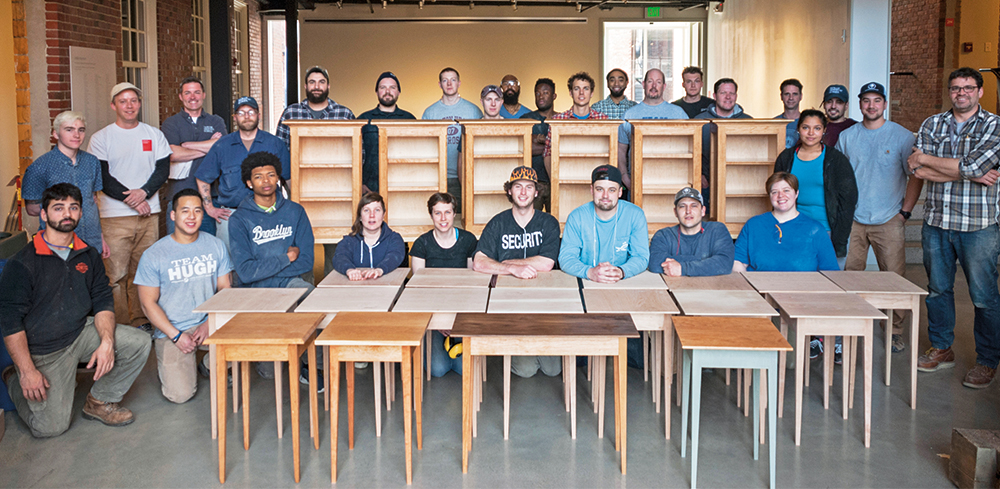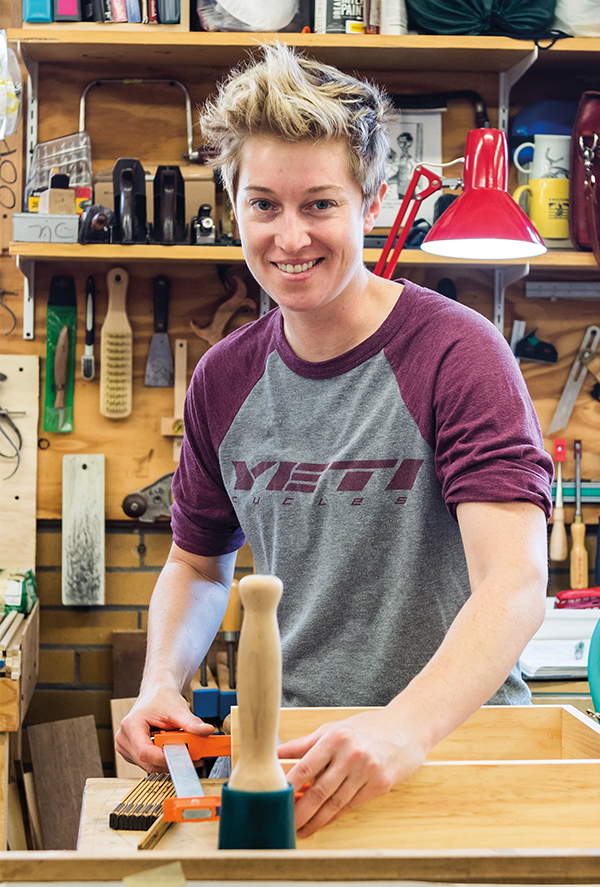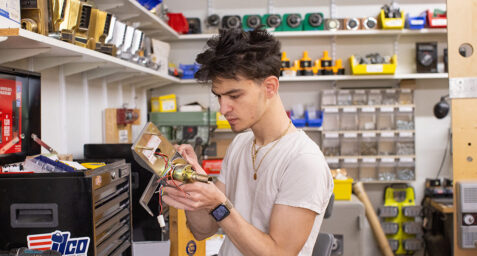Trading Places


Dan Faia CF ’94 and Brian Vogt PC ’94, Department Heads and instructors of CF and CA, respectively, joined forces to select just the right projects. Swapping benches for one week, CF students made six individual plywood cabinets while the CA students each made a Shaker nightstand.
“Brian and I see a lot of similarities between what we do. People think of carpentry as exterior construction and framing, but it’s really about everything inside too, except for the furniture. We’ve both done a lot of the same things in our careers, including staircases and interior trim, so we knew a project like this would really benefit our students,” explains Dan.
The difference is in the approach. One example is that that furniture making students generally set their own pace and schedules, while carpentry students tend to work very quickly in order to finish large-scale projects in short amounts of time.
“The CA students were told to slow down, while the CF students were shown how to speed things up. It really comes down to using a machine, when possible, so you can produce a dozen or more components at once versus just one of something at a time,” he explains.
Dan agrees. “It was a good experience for my students to stay on a fixed schedule. I was also amazed to see what Brian’s students did with the Shaker nightstand. We hadn’t taught that in such a short period of time before,” he says.
People think of carpentry as exterior construction and framing, but it’s really about everything inside too, except for the furniture. We’ve both done a lot of the same things in our careers, including staircases and interior trim, so we knew a project like this would really benefit our students.
Brian believes trading places brought about some new insights for his students. “The class swap gave them a broader understanding of woodworking and joinery overall. They had all the necessary skills already—it was just about using them in a different way.”
He felt the project also offered a valuable lesson to CF students. “Furniture making is a labor of love. Building kitchen cabinets is more a labor of money—it’s faster, less complicated, and there are just going to be more opportunities out there,” he shares.
CF students made their cabinets as a production run, with all students taking on a portion of the tasks. This ultimately brought to light the difference between working individually as a furniture maker versus working as part of a team as a carpenter.
“A set of cabinets going into a house needs to match fairly identically. Before this project, if I had asked each of the 14 students to make a cabinet, I’d have gotten 14 different cabinets, which probably wouldn’t work in most kitchens,” says Dan with a laugh.
This article is from our 2017 Annual Report. See all the stories here, or download a pdf of the entire report.



